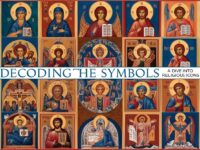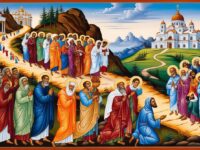Prayer is a universal human practice that transcends cultural and geographical boundaries. While its forms and meanings can vary significantly among different faiths, the act of prayer remains a common thread weaving through the tapestry of global spirituality. Whether it involves silent meditation, spoken words, or intricate rituals, prayer serves as a powerful conduit for expressing devotion, seeking guidance, or finding peace. This article embarks on a journey to explore the diverse prayer traditions across various religions, revealing both the shared human longing for connection and the unique expressions of faith.
Delving into Diverse Prayer Practices Worldwide
Around the globe, prayer is a dynamic and multifaceted practice that reflects the rich tapestry of human belief and culture. In Christianity, for example, prayer is a central element of worship and daily life. The Lord’s Prayer, known as the “Our Father,” is a cornerstone of Christian prayer, recited by millions worldwide in both communal and personal settings. Beyond this, Christians may engage in spontaneous prayer, offer intercessions for others, or participate in meditative practices such as the rosary, each form providing a different avenue for communion with God.
Islamic prayer practices offer another fascinating perspective, characterized by the five daily prayers, or Salat, which are considered one of the Five Pillars of Islam. Muslims around the world face Mecca and perform a ritual sequence of movements and recitations, which serve to reinforce their faith and discipline. Salat is both an individual and collective exercise, with Friday congregational prayers at mosques being a highlight of communal worship. This structured prayer schedule not only reflects devotion but also provides regular moments of spiritual reflection and connection throughout the day.
In contrast, the meditative prayer practices found in Buddhism emphasize mindfulness and inner peace. Meditation is a core aspect of Buddhist prayer, where practitioners may focus on breath, mantras, or visualizations to cultivate awareness and compassion. Tibetan Buddhism incorporates prayer wheels and prayer flags, which are believed to spread blessings and positive intentions with the wind. This emphasis on inner tranquility and external harmony showcases the adaptable nature of prayer, tailored to the beliefs and needs of each faith.
Unveiling Unique Rituals Across Religions
Hinduism offers a rich array of prayer rituals that are deeply intertwined with its diverse pantheon of deities and philosophical concepts. The practice of puja, a ceremonial worship involving offerings of flowers, food, and incense, allows devotees to honor and communicate with their chosen deities. Mantras, powerful sacred sounds or phrases, are chanted to invoke divine presence and seek blessings. These rituals are often accompanied by the recitation of ancient scriptures, creating a multisensory experience that engages both the mind and spirit.
In Judaism, prayer is an integral part of daily life, with distinct prayers and blessings marking various occasions. The Shema, a declaration of faith, and the Amidah, a series of blessings recited while standing, are central components of Jewish prayer services. The use of prayer books, or Siddurim, provides structure and continuity, while personal prayers and petitions add a layer of individuality. The synagogue serves as a hub for communal prayer, fostering a sense of unity and shared tradition among worshipers.
Indigenous spiritualities often incorporate prayer into rituals that honor the natural world and ancestral spirits. In many Native American traditions, prayer is an expression of gratitude and respect for the earth, often integrated into ceremonies such as the sweat lodge or sun dance. These practices emphasize a holistic relationship with nature and the community, reflecting a worldview where spiritual and environmental well-being are intricately connected. Through these diverse and unique expressions, prayer acts as a bridge between the sacred and the everyday, highlighting the deep-rooted connections humans have with the divine.
Prayer, in all its forms, remains a testament to humanity’s enduring quest for meaning, connection, and transcendence. Whether whispered in solitude, chanted in harmony, or enacted through intricate rituals, prayer provides a space for reflection and renewal. As we observe the myriad ways people around the world engage with the divine, we uncover not just differences, but shared aspirations and hopes. In this exploration, we are reminded that while the languages, symbols, and practices may vary, the essence of prayer as a profound expression of faith and spirituality remains a common heritage shared across cultures and generations.

















